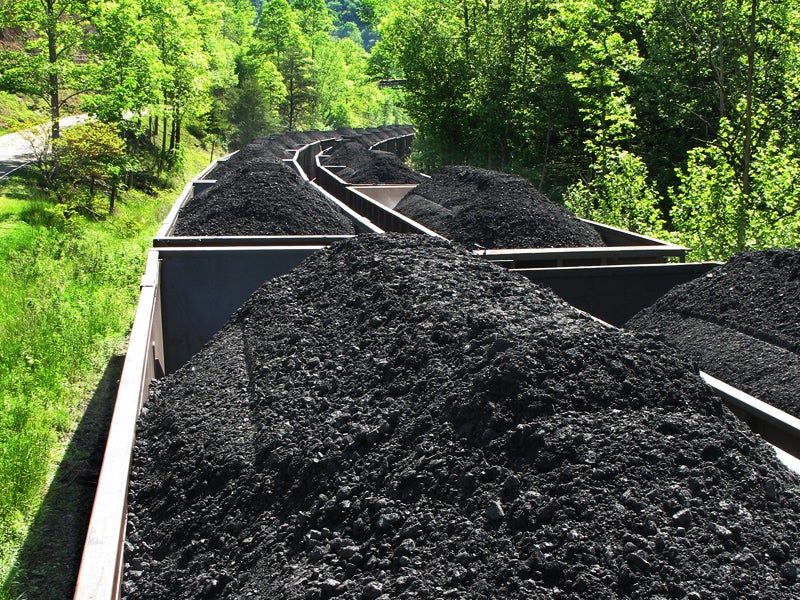‘Blood on the Mountain’ Paints a Damning Portrait of West Virginia Coal
In this visceral documentary, filmmakers trace the dirty history of coal mining and mountaintop removal that has devastated Appalachia.

This page was published 10 years ago. Find the latest on Earthjustice’s work.
In the land of black gold, you either mine coal or you leave. Skylines have crumbled under the bombardment of mountaintop removal, and once-pristine springs have been turned to acid. Still, the coal machine barrels on in “Blood on the Mountain,” a 2014 documentary by Mari-Lynn C. Evans, Jordan Freeman and Phylis Geller.
Activist Nick Mullins, a fourth generation underground coal miner from southwestern Virginia, joined the Sierra Club and Earthjustice for a screening of this film. Like many men in his town, Mullins turned to coal mining in order to support his family and give his children a better future. But as he watched his childhood home of Little Forks fall prey to mining contamination, he had a change of heart.
“I can no longer fully trust the area,” said Mullins. Many of his former neighbors, friends and family have cancer caused by water and air pollution. After moving his children to a cleaner town, Mullins decided to fight back.
That was easier said than done. “Blood on the Mountain” reveals a history of industrial propaganda as deep-seated as a coal spur. The horrendous working conditions and black lung deaths of early miners have been re-written in West Virginia history books in order to cast a better light on the industry. Coal company representatives visit schools to promote their trade to young children. Many Appalachian residents maintain a strong pride in their coal heritage and are fiercely defensive of the industry that employs so much of the area’s population.
“It pains me to see how much of Appalachia’s history has been rewritten,” said Mullins. “It’s really just a media war.”
Drive through coal country and you’ll see t-shirts reading “support coal or live in the dark.” According to Mullins, any mention of environmentalism or green energy is met with hostility and activists are labeled “tree huggers.” In an atmosphere like this, is it possible to take coal out of the picture?
Mullins said the most successful transition would have to be presented from an economic point of view rather than an environmental one. If coal is someone’s livelihood, they will continue to mine it until it’s no longer profitable, so the answer is to create an economic incentive to transition to a different kind of work and different sources of energy.
According to Mullins, coal companies are harvesting more coal than ever through mountaintop removal, while employee numbers are on a steady decline. Mountaintop removal mining involves blasting 800 to 1,000 feet off the top of a mountain to access the coal seams below. The debris is often dumped into nearby valleys, burying streams and rivers.
In Mullins’ words, “It’s cheaper to destroy a mountain than to put a man to work underground.” This presents a problem for communities that are economically dependent on employment from the coal industry. In his own experience, Mullins found coal work to be a cutthroat environment full of fierce job competition, much different from the familial culture described by his forefathers.
Times are a changin’ for coal country as mountaintop removal becomes more common. Both Earthjustice and the Sierra Club have fought against this environmentally and socially destructive practice, and activists like Nick Mullins offer hope for the future. However, the coal dust has yet to clear and the people of West Virginia have yet to discover a newer, safer livelihood.